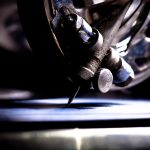1. Introduction to Aftermarket Exhaust Systems
For many car enthusiasts, upgrading the exhaust system is one of the first modifications they consider. Whether its for improved performance, a more aggressive sound, or just better aesthetics, aftermarket exhaust systems offer several advantages over stock exhausts. Two of the most common upgrades are cat-back and axle-back exhaust systems. But before we dive into their differences, lets explore why upgrading your exhaust system is a popular choice among enthusiasts.
Why Upgrade Your Exhaust System?
The exhaust system plays a critical role in your vehicles performance, sound, and even fuel efficiency. Factory exhaust systems are designed with a balance of cost, emissions compliance, and noise reduction, often limiting your cars true potential. Here are some of the main reasons why people opt for an aftermarket exhaust:
1. Improved Performance
Aftermarket exhaust systems help improve airflow, reduce backpressure, and enhance engine efficiency. This can lead to:
- Increased horsepower
- Better throttle response
- Enhanced fuel efficiency (in some cases)
2. Enhanced Sound
One of the most noticeable differences after an exhaust upgrade is the sound. Many aftermarket systems offer a deeper, more aggressive tone that enhances the driving experience. Depending on the system, you can achieve anything from a sporty growl to an outright race-car roar.
3. Aesthetic Appeal
Many aftermarket exhaust systems come with stylish tips in different finishes such as chrome, carbon fiber, or black-coated steel. Upgrading your exhaust can give your vehicle a more aggressive and customized look.
4. Weight Reduction
Stock exhaust systems are often made from heavy materials. Aftermarket options, particularly those made from stainless steel or titanium, can be significantly lighter, which helps with overall vehicle weight and performance.
Comparison of Stock vs. Aftermarket Exhaust Systems
| Feature | Stock Exhaust | Aftermarket Exhaust |
|---|---|---|
| Performance | Limited airflow, restricted performance | Optimized for better flow, increased power |
| Sound | Quiet and restrictive | Louder and more aggressive |
| Weight | Heavier materials | Lightweight materials for reduced weight |
| Aesthetics | Simple, factory-designed appearance | Custom tips, polished look |
Now that you understand why many car enthusiasts upgrade their exhaust systems, lets take a closer look at the differences between cat-back and axle-back exhaust systems in the next sections.
2. What Is a Cat-Back Exhaust System?
A cat-back exhaust system is one of the most popular upgrades for car enthusiasts looking to enhance performance and sound. But what exactly is it, and how does it compare to other exhaust modifications?
Understanding the Cat-Back Exhaust System
The term “cat-back” refers to the portion of the exhaust system that starts from the catalytic converter and extends to the rear of the vehicle. This upgrade replaces components such as the mid-pipe, resonator (if present), muffler, and tailpipe.
Components of a Cat-Back Exhaust System
A typical cat-back exhaust system includes the following parts:
| Component | Function |
|---|---|
| Mid-Pipe | Connects the catalytic converter to the muffler, impacting airflow and sound characteristics. |
| Resonator (Optional) | Helps reduce specific frequencies of exhaust noise to improve sound control. |
| Muffler | Designed to reduce noise while allowing better airflow for performance gains. |
| Tailpipe | The final section where exhaust gases exit, often styled for aesthetic appeal. |
How a Cat-Back Exhaust System Impacts Performance and Sound
Performance Benefits
Replacing the factory exhaust with a cat-back system allows for improved exhaust flow, reducing backpressure and helping the engine breathe more efficiently. This can lead to slight horsepower and torque gains, especially when combined with other performance modifications.
Sound Enhancement
One of the main reasons car enthusiasts choose a cat-back exhaust is for the sound. Depending on the design, it can make the exhaust note deeper, louder, or more aggressive. Systems with straight-through mufflers tend to offer a louder, sportier tone, while those with resonators can refine the sound to reduce drone.
Fuel Efficiency Considerations
While fuel economy improvements are typically minimal, a more efficient exhaust flow can slightly enhance mileage under certain driving conditions. However, aggressive acceleration may offset any potential gains.
Is a Cat-Back Exhaust System Right for You?
A cat-back system is ideal if youre looking for noticeable sound enhancements and slight performance benefits without making major modifications. It’s a great balance between cost, performance, and ease of installation compared to full exhaust system upgrades.

3. What Is an Axle-Back Exhaust System?
An axle-back exhaust system replaces the components of the exhaust system from the rear axle to the exhaust tip. This includes the mufflers, exhaust pipes, and sometimes additional resonators. Compared to cat-back systems, axle-back exhausts are a simpler and more affordable upgrade for drivers looking to enhance sound and aesthetics without extensive modifications.
Differences Between Axle-Back and Cat-Back Systems
While both axle-back and cat-back exhaust systems serve to improve exhaust flow and sound, they differ in terms of design, cost, and overall performance impact. Here’s a breakdown of their key differences:
| Feature | Axle-Back Exhaust System | Cat-Back Exhaust System |
|---|---|---|
| Replacement Area | Rear axle to exhaust tip | Catalytic converter to exhaust tip |
| Performance Impact | Minimal power gains | Moderate to significant power gains |
| Sound Enhancement | Noticeable sound improvement | More pronounced exhaust tone |
| Installation Difficulty | Easy—minimal components | Moderate—more parts involved |
| Cost | Lower | Higher |
Advantages of an Axle-Back Exhaust System
For many car enthusiasts and everyday drivers, axle-back exhaust systems are an appealing upgrade. Here’s why:
1. Cost-Effective Upgrade
Since axle-back systems replace only a small portion of the exhaust, they are generally more affordable than cat-back systems. This makes them a great option for those on a budget who still want to improve their car’s sound.
2. Easier Installation
Axle-back exhaust systems have fewer components, making them easier to install. Many vehicle owners can complete the installation at home with basic tools, avoiding costly professional labor.
3. Improved Exhaust Tone
Although axle-back systems don’t significantly increase horsepower, they do enhance the exhaust note. This can give your car a more aggressive and sporty sound without modifying the entire exhaust system.
4. No Impact on Emissions
Because an axle-back system starts after key emissions components like the catalytic converter, it wont affect emissions compliance or require additional tuning adjustments.
5. Aesthetic Improvements
Many axle-back exhaust systems come with upgraded exhaust tips, giving your vehicle a sportier and more aggressive rear-end appearance.
4. Key Differences: Performance, Sound, and Cost
Performance and Horsepower Gains
One of the biggest reasons car enthusiasts upgrade their exhaust system is to improve performance. Between cat-back and axle-back systems, the cat-back setup generally provides better horsepower gains. Since a cat-back system replaces a larger portion of the exhaust, including the mid-pipe and muffler, it allows for better exhaust flow and reduced backpressure. This can translate to a small but noticeable increase in horsepower and torque.
On the other hand, axle-back systems only replace the muffler and tailpipes, so they don’t impact overall performance as much. If your main goal is to get more power from your vehicle, a cat-back exhaust system is the better option.
Exhaust Sound and Tone
For many drivers, sound is just as important as performance. Both cat-back and axle-back systems can enhance your vehicle’s exhaust note, but they do so in different ways.
- Cat-Back Exhaust: Since cat-back systems replace a larger section of the exhaust, they typically result in a deeper and more aggressive sound. The changes in piping and muffler design allow for a throatier, more performance-oriented sound.
- Axle-Back Exhaust: An axle-back system mainly modifies the tone and volume of the exhaust. It can make your car sound louder and sportier, but it wont have as much of an impact on tone depth compared to a full cat-back system.
Installation Complexity
When it comes to installation, axle-back systems are significantly easier to install compared to cat-back systems. Because they only replace the section after the rear axle, they typically require fewer modifications and less labor.
On the other hand, cat-back exhausts involve replacing a longer section of the vehicles exhaust system. This may require additional tools, more time, and sometimes even professional installation if cutting or welding is necessary.
Cost Comparison
Budget is an important factor when choosing between a cat-back and axle-back exhaust. In general, cat-back systems are more expensive due to the additional piping and potential performance gains they offer. Axle-back systems, being simpler and covering less of the exhaust, are usually the more affordable option.
| Feature | Cat-Back Exhaust | Axle-Back Exhaust |
|---|---|---|
| Horsepower Gains | Moderate to noticeable increase | Minimal increase |
| Sound | Deeper and more aggressive | Louder but less deep |
| Installation Difficulty | Moderate to difficult (may require professional help) | Easy (DIY-friendly) |
| Cost | Higher | Lower |
Choosing between a cat-back and an axle-back exhaust system depends on your goals and budget. If you want improved performance and a deeper tone, go with a cat-back system. If youre mainly after a better exhaust sound without breaking the bank, an axle-back system is a great choice.
5. Which One Should You Choose?
Deciding between a cat-back and an axle-back exhaust system depends on your driving style, budget, and overall goals for your vehicle. Both options offer benefits, but choosing the right one ensures you get the best performance and sound without overspending.
Consider Your Driving Style
Your choice largely depends on how you drive your car:
- Daily Driver: If you mostly use your car for commuting and casual driving, an axle-back system is a great choice. It improves sound and appearance without a significant investment.
- Performance Enthusiast: If you enjoy pushing your car to its limits or take it to the track, a cat-back system offers better performance gains by improving airflow and reducing backpressure.
- Off-Roading: For trucks and SUVs used for off-roading, a cat-back exhaust can help with power delivery, especially in challenging terrains.
Budget Consideration
The cost of an exhaust upgrade plays a key role in the decision-making process. Here’s a quick comparison:
| Exhaust Type | Average Cost (Including Installation) | Performance Gains |
|---|---|---|
| Axle-Back | $300 – $1,000 | Minimal (Mostly Sound Improvement) |
| Cat-Back | $600 – $2,500 | Noticeable (Better Performance & Sound) |
Vehicle Goals
Think about what youre trying to achieve with your exhaust upgrade:
- Better Sound Only: If you just want a better exhaust note without a performance boost, an axle-back system is the way to go.
- Performance + Sound: If youre seeking horsepower gains along with an improved exhaust note, a cat-back system is a better investment.
- Improved Fuel Efficiency: A cat-back exhaust, especially one designed for efficiency, can provide slight improvements in MPG by enhancing airflow.
Final Thoughts
If youre on a budget and want a simple sound upgrade, an axle-back system is a great choice. However, if youre looking for both performance and sound improvements, and have a larger budget, a cat-back exhaust is the better option.

